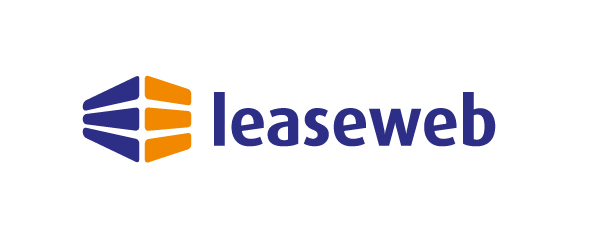Between Utopia and Reality: Gaia-X Is Bringing the Dynamic Cloud within Reach
Gaia-X is bringing the dynamic cloud within reach – and may soon offer an exciting new future in cloud computing, reports Marcus Busch from Leaseweb Deutschland.

© agsandrew | istockphoto.com
Between utopia and reality lies the “dynamic cloud”, a place where all workloads are distributed logically between various cloud platforms and each piece of technology is fully utilized. While the industry as a whole is not yet there, Gaia-X is bringing the dynamic cloud within reach – and may soon offer an exciting new future in cloud computing.
There is a wide range of products, functionalities, and price scales for various cloud platforms. Companies can choose from the offers of hyperscalers as well as numerous medium-sized providers who have specific cloud portfolios (including dedicated servers and dedicated compute). The majority of organizations create flexible hybrid cloud infrastructures by connecting the public clouds of hyperscalers to their own infrastructure. It also includes the possibility of easily transferring individual components of cloud infrastructure to other providers – also known as a “dynamic cloud”.
A dynamic cloud is essentially a multi-cloud environment in which workloads and data can be moved between individual clouds. This enables the most effective infrastructure mix for each use case by identifying and utilizing free instances in an environment of multi-cloud providers.
This setup allows customers to take the fullest advantage of the cloud and promotes competition between providers in the cloud market, furthering cloud innovation. In practice, however, such a cloud environment is still a long way off because although the offers are similar, the underlying technologies are very different.
No two clouds are the same
If all cloud environments were (at least to a certain degree) compatible with one another, it would be relatively easy to develop a corresponding abstract layer in which different clouds could be dynamically combined under one surface. In fact, there are already cloud orchestration tools that – in theory – have the potential to make this possible. They offer a single user interface that can be used to measure the performance of individual clouds, compare prices, and move workloads based on requirements. On paper, these tools look extremely promising for the creation of future dynamic cloud infrastructures.
However, they are not yet practical or available for implementation. This is due to the fact that although all cloud providers (and especially hyperscalers) deliver virtually the same product, there are many details that differ between products – especially due to varying interfaces and APIs. As a result, even simple migrations between clouds currently take massive amounts of effort to execute. As various providers continuously develop their cloud services, the creation, updates, and management potential of a cloud orchestration tool become increasingly complex – and almost impossible in practice.
Virtualization platforms in the cloud: A distorted solution
To support users migrating between cloud environments, hyperscalers have been offering their virtualization platforms to operate in the cloud – for example, the operation of VMware in the Amazon cloud has been heavily advertised in recent months. However, this concept distorts the actual intention of cloud migrations. While the migration problem for some workloads can be solved in this way, customers pay very high public cloud prices in return for using their environment virtualized in the cloud. This is something customers could achieve at a fraction of the cost if they ran their setups on dedicated server infrastructure.
The problem of the lack of hyperscaler compatibility is of a fundamental nature. For cloud providers, there are hardly any advantages to making their clouds compatible with other offers. In addition to this, further problems can be recognized easily due to the fact that prices for uplink and downlink differ suspiciously. Sending data to the cloud is cheap – but getting it out of the cloud is disproportionately expensive. Seldom has the attempt to establish a vendor link been more obvious. It is unlikely that today’s leading hyperscalers will change this strategy in the near future to ensure more compatibility – and thus paving the way for the dynamic cloud – on their own.
Gaia-X brings the dynamic cloud within reach
Gaia-X shows that things can be done differently by standardizing European cloud offerings and creating a counterweight to American cloud solution providers. Gaia-X, as a partnership of European cloud industry partners, aims to offer data mobility via an open, federated, and secure cloud setup. The goal is to make infrastructure mobile and dynamic by implementing uniform APIs and clear service descriptions and functionalities, among other changes to the cloud industry.
The dynamic hybrid cloud has future opportunities
It’s true that the cloud is not yet as “dynamic” as we would like it to be – and while Gaia-X offers a promising future, it does not mean that companies cannot already start to manage their hybrid clouds dynamically now. The combination of offerings from hyperscalers and smaller providers already contains high flexibility, as customers can choose from the broad portfolios of medium-sized cloud providers. For example, there are hundreds of different models and specifications of infrastructure that can be tailored precisely to the optimal performance of a workload. This can create an efficient cloud mix that places every workload in its appropriate cloud environment.
Until cloud orchestration solutions or initiatives such as Gaia-X can provide more dynamic and concrete management options, companies must carefully think about how they combine their infrastructure and necessary cloud services to ensure workloads are running optimally while avoiding additional costs and strict vendor lock-ins.
Marcus Busch is the Managing Director of Leaseweb Deutschland GmbH, based in Frankfurt/Main. The MBA holder has been active in the IT and telecommunications market for over 25 years. Since starting his career at Thyssen Telecom AG in Düsseldorf, Marcus has gained expertise in networks and cloud technologies by occupying leading positions in several organizations, including Verizon Enterprise Solutions, Media Broadcast GmbH, and Deutsche Telekom AG/T-Systems.
Leaseweb is a leading Infrastructure as a Service (IaaS) provider serving a worldwide portfolio of 18,000 customers ranging from SMBs to Enterprises. Services include Public Cloud, Private Cloud, Dedicated Servers, Colocation, Content Delivery Network, and Cyber Security Services supported by exceptional customer service and technical support.
Please note: The opinions expressed in Industry Insights published by dotmagazine are the author’s own and do not reflect the view of the publisher, eco – Association of the Internet Industry.




